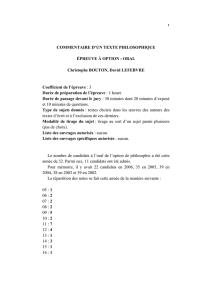
Découvrez Maxicours
Construire une réflexion personnelle. Développer son argumentation. Points clés Il existe quatre types de plan: thématique, dialectique, analytique et comparatif. C'est l'analyse du sujet et de la consigne qui doit mener au choix de tel ou tel plan. Pour bien comprendre La dissertation Analyser un sujet de dissertation 1. Ce qu’il faut savoir La dissertation porte sur l’ensemble des textes du corpus mais également sur les connaissances plus larges du candidat (textes et œuvres étudiées en classe et lectures personnelles) And there you have it – the traditional dissertation structure and layout, from A-Z. To recap, the core structure for a dissertation or thesis is (typically) as follows: Title page; Acknowledgments page; Abstract (or executive summary) Table of contents, list of figures and tables; The core chapters (the “meat” of the dissertation)

II – Comment analyser un sujet de dissertation ?
The abstract is a short summary of your dissertation, usually about – words long. You should write it at the very end, when you’ve completed the rest of the dissertation. In the abstract, make sure to: State the main topic and aims of your research Describe the methods you used Summarize the main results State your conclusions · The dissertation will be structured such that it starts with an introduction, develops on the main idea in its main body paragraphs and is then summarised in conclusion. However, if you are basing your dissertation on primary or empirical research, you will be required to include each of the below components Construire une réflexion personnelle. Développer son argumentation. Points clés Il existe quatre types de plan: thématique, dialectique, analytique et comparatif. C'est l'analyse du sujet et de la consigne qui doit mener au choix de tel ou tel plan. Pour bien comprendre La dissertation Analyser un sujet de dissertation 1. Ce qu’il faut savoir
Combien de parties pour un plan de dissertation ?
The abstract is a short summary of your dissertation, usually about – words long. You should write it at the very end, when you’ve completed the rest of the dissertation. In the abstract, make sure to: State the main topic and aims of your research Describe the methods you used Summarize the main results State your conclusions La dissertation porte sur l’ensemble des textes du corpus mais également sur les connaissances plus larges du candidat (textes et œuvres étudiées en classe et lectures personnelles) Construire une réflexion personnelle. Développer son argumentation. Points clés Il existe quatre types de plan: thématique, dialectique, analytique et comparatif. C'est l'analyse du sujet et de la consigne qui doit mener au choix de tel ou tel plan. Pour bien comprendre La dissertation Analyser un sujet de dissertation 1. Ce qu’il faut savoir

*The Caveat *
The abstract is a short summary of your dissertation, usually about – words long. You should write it at the very end, when you’ve completed the rest of the dissertation. In the abstract, make sure to: State the main topic and aims of your research Describe the methods you used Summarize the main results State your conclusions La dissertation porte sur l’ensemble des textes du corpus mais également sur les connaissances plus larges du candidat (textes et œuvres étudiées en classe et lectures personnelles) · The dissertation will be structured such that it starts with an introduction, develops on the main idea in its main body paragraphs and is then summarised in conclusion. However, if you are basing your dissertation on primary or empirical research, you will be required to include each of the below components

1. Analyse du sujet au brouillon
And there you have it – the traditional dissertation structure and layout, from A-Z. To recap, the core structure for a dissertation or thesis is (typically) as follows: Title page; Acknowledgments page; Abstract (or executive summary) Table of contents, list of figures and tables; The core chapters (the “meat” of the dissertation) Construire une réflexion personnelle. Développer son argumentation. Points clés Il existe quatre types de plan: thématique, dialectique, analytique et comparatif. C'est l'analyse du sujet et de la consigne qui doit mener au choix de tel ou tel plan. Pour bien comprendre La dissertation Analyser un sujet de dissertation 1. Ce qu’il faut savoir La dissertation porte sur l’ensemble des textes du corpus mais également sur les connaissances plus larges du candidat (textes et œuvres étudiées en classe et lectures personnelles)
No comments:
Post a Comment